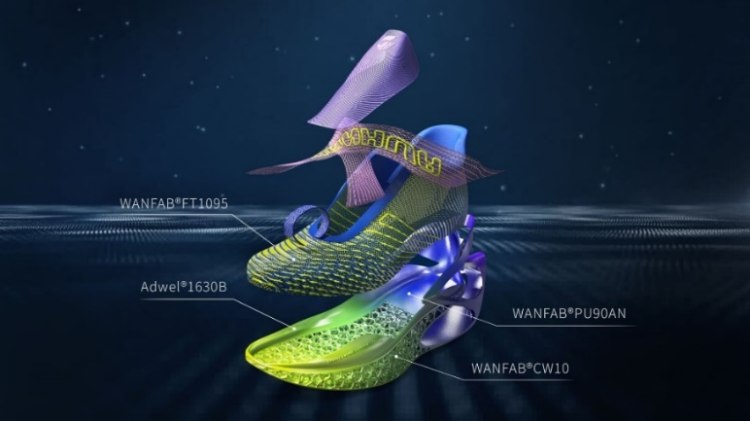
Plastics and rubber materials have revolutionized many aspects of sports and leisure activities over the years, and technology advances continue to improve safety, comfort, performance and – increasingly – sustainability, in those sectors.
The applications are diverse and widespread - ranging from the balls used in games and various footwear and clothing, to protective helmets and padding, playing surfaces, and gear such as racquets, golf clubs, safety eyewear, racing bikes, skis, kayaks and surfboards.
Manufacturers and brand owners, for example, are investing significant money and effort into producing sneakers and footwear that offer style, performance and increased recyclability while also leveraging techniques such as 3D printing.
Yantai, China-based materials supplier Wanhua Chemical Group Co. Ltd. has partnered with Chinese footwear maker Peak Sports to 3D print a futuristic-looking sneaker entirely from thermoplastic polyurethane (TPU). Called “The Next,” the colorful shoe is both customizable and totally recyclable, the two firms said when announcing it in October. Wanhua supplies TPU filament, powder and coatings and adhesive to make the shoe.

Three grades of Wanhua Chemical TPU materials are being used in this newly introduced, 3D printed sneaker made for Peak Sports. (Wanhua Chemical photo)
Germany’s Covestro, meanwhile, is also kicking up its heels in this sector. The materials supplier is working with Chinese shoe designer Axis Liu to create trendy, recyclable sneakers entirely from TPUs, as well. The partners have also developed customized running and basketball shoes, using a number of Covestro material technologies, including its Insqin-brand, water-based PU textile coatings and adhesives, urethane foams, TPU textile fibers and films, and Maezio-brand continuous fiber-reinforced thermoplastic composites (CFRTP).

These mono-materials, fully recyclable sneakers contain TPUs from Covestro’s Desmopan eco range, whose carbon content partly originates from biomass. Other types being used are based on polyethercarbonate polyols, which Covestro produces from CO2 using an innovative technology and sells under the name Cardyon. (Courtesy of Messe Düsseldorf/ctillmann)
Others in that sector, such as Nike and adidas, also are finding ways to incorporate waste ocean plastics into their shoes and sportswear.
Indian start-up sports apparel company Alcis Sports, meanwhile, is making its line of athleisure clothing out of recycled PET bottles. Company co-founder Roshan Baid told The Economic Times in India in October that the firm plans to produce half its garments from recycled polyester within the next few months. Alcis claims that each T-shirt they make, for example, consumes about eight plastic bottles, saves roughly 27 liters of water, uses half the energy to produce, and reduces carbon emissions by more than 54 percent than shirts made from virgin polyester.
Companies such as Spanish injection molder RDI Plastics use polycarbonate, ABS, expanded polystyrene and other materials to make protective helmets for use in hockey, soccer, motocross and cycling, among others.

Tough, durable plastics such as polycarbonate and ABS find use in a variety of protective helmets used in different sports. (RDI Plastics photo)



